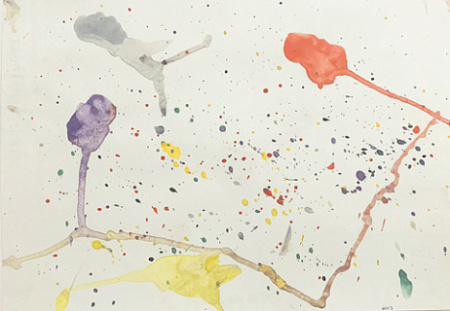
Observe a child’s drawing. Notice the resolute white background, the figures often grounded at the very bottom edge of the paper. This isn’t merely a lack of skill, but an intuitive act of creation that uncannily mirrors the profound artistic and philosophical principles of classical Chinese painting. It suggests a universal language of art, a bridge between the uninhibited imagination of a child and the sophisticated wisdom of ancient masters, challenging our very perception of space and meaning.
In the Western artistic tradition, the blank canvas has often been seen as a void to be conquered, a space to be filled with color, form, and scientific perspective. When avant-garde artists finally dared to present emptiness as the subject itself—like the 19th-century humorist Alphonse Allais with his monochrome canvases or Kazimir Malevich with his revolutionary “White on White”—it was an act of radical rebellion. They demonstrated that even a void could be imbued with context and narrative, but it was a concept that consciously broke from centuries of tradition.
Contrast this with the perspective of classical Chinese art, where empty space has long been a central and active element. This is the concept of *kōng* (空), or the “pregnant void.” Far from being a mere background, this unfilled space is considered a dynamic component of the composition, suggesting infinity, mystery, and the unseen. It is often the vessel for *qi* (气), the vital spirit or life-force that animates the painting, breathing life into the mountains, trees, and figures it surrounds.
Children, unburdened by formal training, instinctively grasp this philosophy. Their refusal to fill the background is not an oversight; it is a reflection of their inner world. For a child, the vast whiteness of the page is not empty but filled with the very air they breathe, with untold stories and nascent possibilities. As the art historian George Rowley observed, their focus lies more on “the idea of things than their visibility.” This unfilled space is a pristine realm for creation, a necessary condition for bringing their imagination to life.
This shared intuition extends to specific techniques. Chinese painting often employs a “mobile perspective,” where the viewer’s eye travels through different scenes and depths on a single scroll, a method children frequently use to tell a story on one page. Both also use scale to denote not physical distance but emotional significance. In a child’s family portrait, a beloved pet might be drawn larger than a grandparent, just as a Chinese master might enlarge a scholar’s hut to emphasize its importance in a vast mountain landscape. It is a logic of the heart, not of the eye.
Ultimately, this remarkable parallel offers a powerful insight for our interconnected world. It suggests that before we rush to teach the rules of realism, we might learn from the intuitive wisdom inherent in a child’s drawing. It is a testament to a primary human truth, a way of seeing that values imagination over empirical knowledge and finds meaning not just in what is present, but in the limitless potential of what is not. This appreciation for the “eloquence of silence” on a page serves as a potent metaphor for cross-cultural understanding, reminding us that what one culture sees as an empty void, another may see as a space brimming with spirit and life.
